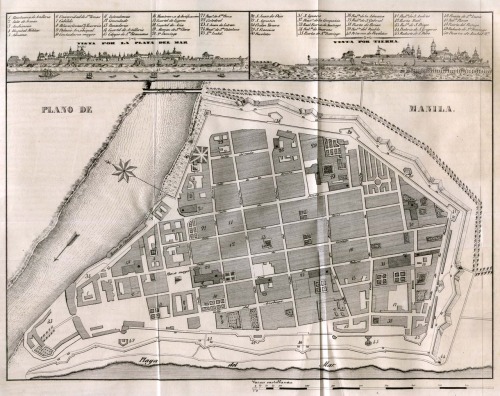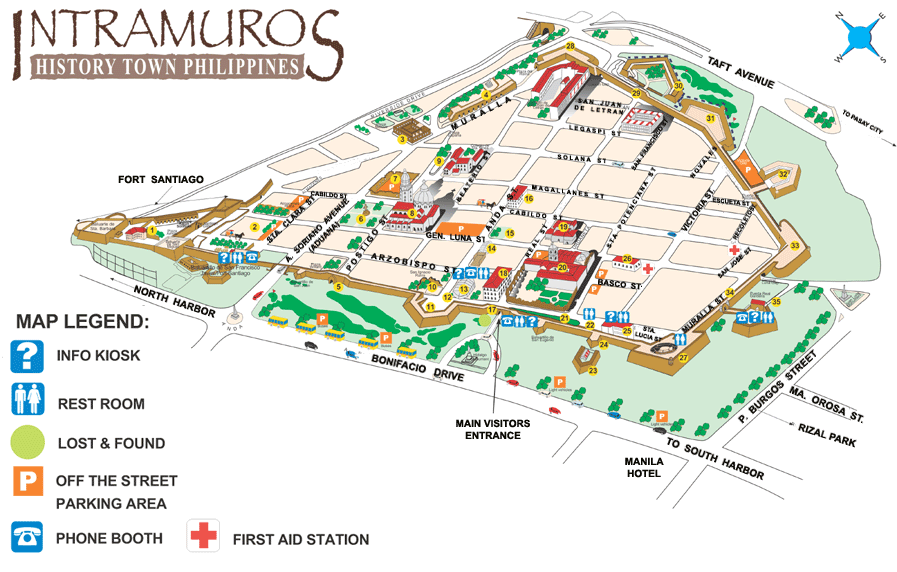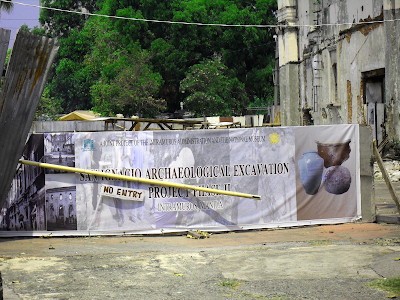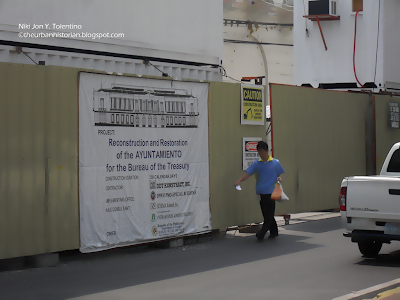Photos also seen in Tumblr.
Saturday, July 24, 2010
I transferred all the contents of my blog there
Since my personal blog is in Tumblr and the interface is much much easier for me, I decided to transfer all of the contents of this blog to Tumblr. Okay?
But I will still make time to update this, bit by bit.
But I will still make time to update this, bit by bit.
Then and Now
Sta. Cruz Church in the 1950's
Sta. Cruz Church and I think the current GE savings bank in Sta. Cruz, Manila.
All the buildings are intack. Even that lamp that lit up the area for the past 50 years is still there standing.
Wednesday, May 26, 2010
The City within Walls
Intramuros, the city within walls, in literal Latin. In the City of Manila there is such a place, the place where the city marked its birth and and growth, this is our Intramuros.
The city literally bloomed out of Pasig River, where the Islamic Kingdom of Maynilad existed as a Fortress with wooden walls until Miguel Lopez de Legaspi invaded the city, 1571.
The current stone walls existing today was only built starting 16th century, with a height of 6 meters and a width of more than a hundred meters, the walls surely gives the city an invulnerable protection.
In the Spanish Period, the enclosure itself marks the whole of the city. The outlying areas (Ermita, Malate, Binondo, San Nicolas, Santa Cruz) were just arraballes of suburbs. Expansion only started in the latter period of Spanish Rule.
The walls survived numerous earthquakes and fires, but not the Battle of Manila in 1945, which reduced the Beautiful City into a piece of Rubble.
Restoration works started after the war, in which the Manila Cathedral is the first to be restored. Intramuros Administration was solely in charge of the restoration and urban plans of the walled city.
Currently, numerous buildings have been restored to their full grandeur and glory and more still awaits.
Plan of Intramuros, 1851, Map source here
Plan of Intramuros, 1898, map source here
contemporary map of Intramuros, map source here
Wednesday, May 19, 2010
The Malate Church
Malate Church is called the Nuestra Señora del Remedios (Our Lady of Remedies), the patroness of women in childbirth. The image was brought from Spain, 1624 and still stands in the altar.
The place where a hero died and a nation was born
Shaped like a small moon, thus Luneta.
The place started as a clearing south of the walls, where the Spanish Elite could have some social activities, and witness the bay's beautiful sunset. The park is also called Bagumbayan (New Town).
Like the small moon in the night, the place witnessed several moments in Philippine History.
The Death of a Hero
December 30, 1896. 7 o'clock in the morning. Jose Rizal was executed, after that he was hailed as the Philippines' National Hero.
The Birth of a Nation
Marker celebrating the first cabinet.
The Flagpole in front of Rizal Park, this is where the Inauguration of the third Philippine Republic Happened.
July 4, 1961
The flag of The United States was lowered and the flag of the Philippines was raised, with the full declaration of independence from US, the inauguration of the Third Philippine Republic with Manuel Roxas as the President.
Tuesday, May 18, 2010
Vigan City: The Heritage City
Short Historical Background
Vigan City, almost 500 kms north of Manila, is a one of the two cities in the Province of Ilocos Sur. It is also the capital of the said province province.
The area, upon conquest by Juan de Salcedo, was called Villa Fernandina, after the Spanish King Philip II's son, Ferdinand.
Eventually, the settlement grew, because of these, the Archdiocese of Nueva Segovia, originally from Lallo, Cagayan was transferred here, 1758.
Contemporary Times
Vigan is the best preserved European planned city in Asia. By 1980's, destruction of the Old Buildings reduced the area of the Old Spanish settlement. By 1993, construction of new buildings became heavily regulated in favor of the restoration of the Old Ones. In 1999, the UNESCO declared the city as one of the Heritage Sites, making it the only village to be a Heritage Site by UNESCO creating a boost for the restoration program of the Town.
Vigan was reduced to a municipality in the reorganization of the Philippines after Spanish Rule. Before that Vigan was already a city, by virtue of a Royal Decree of King Fernando VI of Spain. It was reinstated as a city 2001 by RA 8988 and approved at a plebiscite 2001.
Places you must Go
Vigan City, almost 500 kms north of Manila, is a one of the two cities in the Province of Ilocos Sur. It is also the capital of the said province province.
The area, upon conquest by Juan de Salcedo, was called Villa Fernandina, after the Spanish King Philip II's son, Ferdinand.
Eventually, the settlement grew, because of these, the Archdiocese of Nueva Segovia, originally from Lallo, Cagayan was transferred here, 1758.
Contemporary Times
Vigan is the best preserved European planned city in Asia. By 1980's, destruction of the Old Buildings reduced the area of the Old Spanish settlement. By 1993, construction of new buildings became heavily regulated in favor of the restoration of the Old Ones. In 1999, the UNESCO declared the city as one of the Heritage Sites, making it the only village to be a Heritage Site by UNESCO creating a boost for the restoration program of the Town.
Vigan was reduced to a municipality in the reorganization of the Philippines after Spanish Rule. Before that Vigan was already a city, by virtue of a Royal Decree of King Fernando VI of Spain. It was reinstated as a city 2001 by RA 8988 and approved at a plebiscite 2001.
Places you must Go
- Heritage City, the Old Settlement which includes the Old Town and the most famous of them is Calle Crisologo, the only cobblestone street in the whole heritage village.
- Plaza Burgos, this is Padre Jose Burgos' Home.
- Plaza Salcedo, this is where the Unesco Heritage inscription is found.
- Baluarte, a zoo being kept by the Governor Chavit Sinsgon.
Photos
Click on photos for High Resolution
Subscribe to:
Posts (Atom)






















